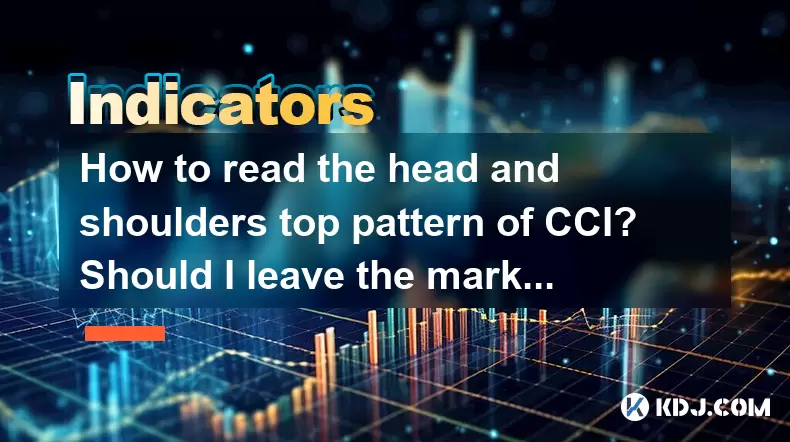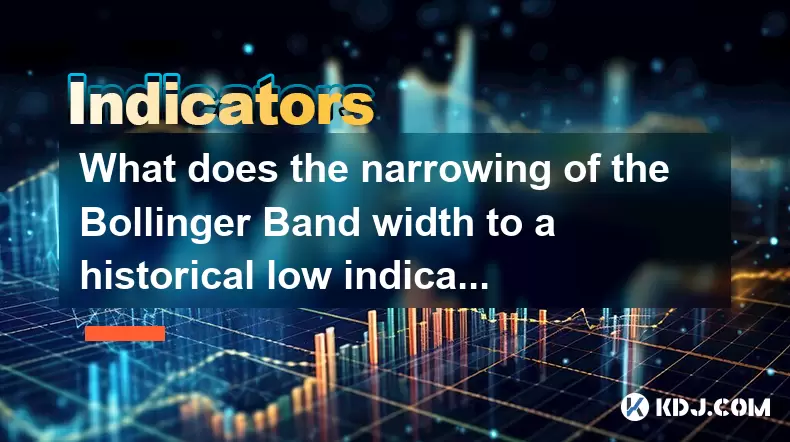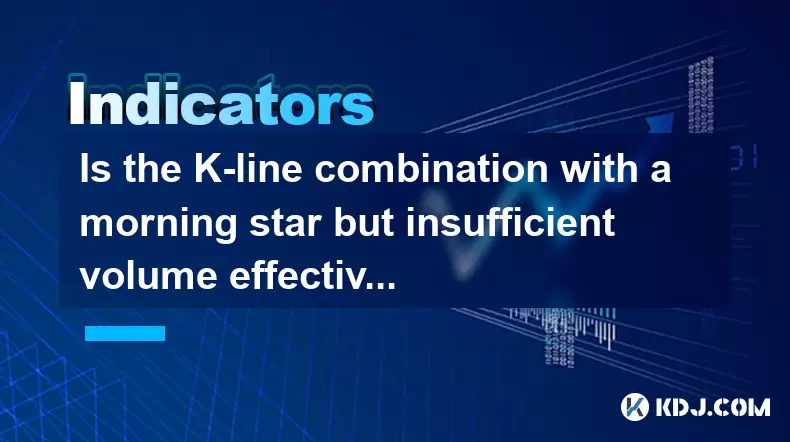-
 Bitcoin
Bitcoin $101,898.5005
-0.75% -
 Ethereum
Ethereum $2,258.1125
-1.07% -
 Tether USDt
Tether USDt $1.0004
0.01% -
 XRP
XRP $2.0178
-2.93% -
 BNB
BNB $624.0243
-1.53% -
 Solana
Solana $134.3298
-0.90% -
 USDC
USDC $0.9999
0.01% -
 TRON
TRON $0.2675
-2.05% -
 Dogecoin
Dogecoin $0.1538
-1.96% -
 Cardano
Cardano $0.5482
-1.11% -
 Hyperliquid
Hyperliquid $35.5636
5.45% -
 Bitcoin Cash
Bitcoin Cash $453.4902
-1.66% -
 Sui
Sui $2.5134
-2.97% -
 UNUS SED LEO
UNUS SED LEO $9.1292
1.77% -
 Chainlink
Chainlink $11.8457
-1.60% -
 Stellar
Stellar $0.2312
-2.73% -
 Avalanche
Avalanche $16.9721
0.29% -
 Toncoin
Toncoin $2.7549
-3.82% -
 Shiba Inu
Shiba Inu $0.0...01081
-1.10% -
 Litecoin
Litecoin $80.8250
-0.71% -
 Hedera
Hedera $0.1374
0.21% -
 Monero
Monero $305.4827
-2.36% -
 Ethena USDe
Ethena USDe $1.0006
0.00% -
 Dai
Dai $1.0000
-0.01% -
 Polkadot
Polkadot $3.2085
-3.12% -
 Bitget Token
Bitget Token $4.0845
-3.13% -
 Uniswap
Uniswap $6.3353
-1.63% -
 Pi
Pi $0.5085
-0.70% -
 Pepe
Pepe $0.0...08913
-3.82% -
 Aave
Aave $232.7090
-0.58%
How to read the head and shoulders top pattern of CCI? Should I leave the market?
The head and shoulders top on the CCI signals a bearish reversal; traders should confirm with other indicators before deciding to leave the market.
May 22, 2025 at 11:22 pm

The Commodity Channel Index (CCI) is a versatile indicator used by traders to identify potential trend reversals and extreme conditions in the market. One of the most recognized patterns within the CCI is the head and shoulders top, which signals a potential bearish reversal. Understanding how to read this pattern on the CCI can be crucial for making informed trading decisions. In this article, we will delve into the specifics of the head and shoulders top pattern on the CCI, and discuss whether it is a signal to leave the market.
Understanding the CCI Indicator
Before diving into the head and shoulders top pattern, it's essential to understand the basics of the CCI. The CCI measures the deviation of the current price from its historical average. It oscillates above and below a zero line and is typically plotted on a scale from -100 to +100. Readings above +100 indicate that the price is trading at unusually high levels relative to its average, while readings below -100 suggest unusually low levels.
Identifying the Head and Shoulders Top Pattern on CCI
The head and shoulders top pattern on the CCI consists of three peaks: the left shoulder, the head, and the right shoulder. Here's how to identify this pattern:
- Left Shoulder: The first peak above the +100 level on the CCI.
- Head: The second peak, which should be higher than the left shoulder, also above the +100 level.
- Right Shoulder: The third peak, which should be lower than the head but may be equal to or higher than the left shoulder, again above the +100 level.
These three peaks are separated by two troughs, which are the valleys between the peaks. The troughs typically do not fall below the zero line but may approach it.
Confirming the Head and Shoulders Top Pattern
To confirm the head and shoulders top pattern on the CCI, traders should look for a break below the neckline. The neckline is drawn by connecting the lows of the two troughs between the peaks. A decisive break below this neckline confirms the bearish reversal signal.
Analyzing the Break of the Neckline
When the CCI breaks below the neckline, it suggests that the bullish momentum has been exhausted, and a bearish trend may be starting. Traders often look for additional confirmation from other indicators or price action to increase the reliability of this signal. For instance, a bearish candlestick pattern or a break below a significant support level on the price chart can provide additional confirmation.
Deciding Whether to Leave the Market
The head and shoulders top pattern on the CCI is a strong bearish signal, but it does not necessarily mean you should leave the market. Several factors should be considered before making such a decision:
- Risk Tolerance: If you have a low risk tolerance, you might choose to exit your positions to avoid potential losses.
- Position Size: If your position size is significant, you may want to reduce it or exit entirely to manage risk.
- Additional Indicators: Confirming the head and shoulders top pattern with other indicators can provide a clearer picture of the market's direction.
- Market Context: Consider the broader market context, including economic indicators and news events, which can influence market sentiment.
Executing a Trade Based on the Head and Shoulders Top Pattern
If you decide to act on the head and shoulders top pattern, here are the steps to execute a trade:
- Identify the Pattern: Confirm the three peaks and the neckline on the CCI.
- Set Entry Point: Enter a short position once the CCI breaks below the neckline.
- Set Stop-Loss: Place a stop-loss order just above the right shoulder to limit potential losses.
- Set Take-Profit: Determine a take-profit level based on the height of the pattern. Measure the distance from the head to the neckline and project it downward from the neckline break point.
Monitoring the Trade
After entering a trade based on the head and shoulders top pattern, it's crucial to monitor the trade closely. Watch for signs of a potential reversal, such as the CCI returning above the neckline or the price action showing bullish signals. Adjust your stop-loss and take-profit levels as necessary based on the market's movements.
Frequently Asked Questions
Q: Can the head and shoulders top pattern on the CCI be used in conjunction with other indicators?
A: Yes, combining the head and shoulders top pattern on the CCI with other indicators, such as moving averages or the Relative Strength Index (RSI), can provide additional confirmation and increase the reliability of the signal.
Q: Is the head and shoulders top pattern on the CCI effective across different timeframes?
A: The effectiveness of the head and shoulders top pattern on the CCI can vary across different timeframes. It tends to be more reliable on longer timeframes, such as daily or weekly charts, but can also be used on shorter timeframes like hourly charts.
Q: What are common mistakes traders make when interpreting the head and shoulders top pattern on the CCI?
A: Common mistakes include entering trades too early before the neckline break, ignoring additional confirmation from other indicators, and not adjusting stop-loss and take-profit levels as the trade progresses.
Q: How can I differentiate between a head and shoulders top pattern and a triple top pattern on the CCI?
A: A head and shoulders top pattern has a distinct middle peak (the head) that is higher than the other two peaks (the shoulders), while a triple top pattern consists of three peaks at approximately the same level. The head and shoulders pattern also features a neckline, which is not a characteristic of the triple top pattern.
Disclaimer:info@kdj.com
The information provided is not trading advice. kdj.com does not assume any responsibility for any investments made based on the information provided in this article. Cryptocurrencies are highly volatile and it is highly recommended that you invest with caution after thorough research!
If you believe that the content used on this website infringes your copyright, please contact us immediately (info@kdj.com) and we will delete it promptly.
- Crypto Penny Coins: Hunting for Monster Gains in 2025
- 2025-06-24 02:45:12
- Ethereum Whale Dips Into Crashing ETH: Smart Move?
- 2025-06-24 02:25:12
- Shiba Inu vs. Rival Tokens: Navigating the Cryptocurrency Craze in NYC
- 2025-06-24 03:10:22
- Stablecoin Scramble: Market Structure and Bill Passage in the Crypto Wild West
- 2025-06-24 02:45:12
- Circle Stock Soars: Surpassing USDC Market Cap After GENIUS Act Boost
- 2025-06-24 03:10:22
- Pepe Coin's Open Interest Hints at Potential Rally: A Trader's Guide
- 2025-06-24 02:50:12
Related knowledge

How to interpret that the time-sharing chart shows "volume and price rise together" but the MACD red column shortens?
Jun 24,2025 at 01:08am
Understanding the Concept of 'Volume and Price Rise Together'In cryptocurrency trading, when a time-sharing chart shows that both volume and price rise together, it is typically interpreted as a sign of strong buying pressure. This means more traders are entering long positions, pushing the price higher while increasing the trading volume. This phenomen...

Is it contradictory that the moving average system is arranged in a bullish pattern but the DMI shows a decline in trend strength?
Jun 23,2025 at 11:43pm
Understanding the Moving Average and DMI RelationshipIn cryptocurrency trading, technical analysis plays a crucial role in identifying potential trends and making informed decisions. Two of the most commonly used indicators are the Moving Average (MA) and the Directional Movement Index (DMI). While both tools aim to provide insight into market direction...

How to interpret that the Williams indicator quickly turns back in the overbought area but does not fall below the 50-axis?
Jun 24,2025 at 02:01am
Understanding the Williams %R Indicator in Cryptocurrency TradingThe Williams %R indicator, often referred to as Williams Percent Range, is a momentum oscillator used by traders to identify overbought or oversold conditions in financial markets, including cryptocurrency. It ranges from 0 to -100, where values above -20 are considered overbought and thos...

What is the significance of the gap formed by the gap opening not being filled within five days?
Jun 23,2025 at 09:42pm
Understanding Gaps in Cryptocurrency TradingIn the world of cryptocurrency trading, a gap refers to a situation where the price of an asset jumps from one level to another without any trading activity occurring between those two levels. This often happens over weekends or holidays when the market is closed, and significant news or events occur that impa...

What does the narrowing of the Bollinger Band width to a historical low indicate?
Jun 24,2025 at 02:35am
Understanding Bollinger Bands and Their Role in Technical AnalysisBollinger Bands, developed by John Bollinger in the 1980s, are a popular technical analysis tool used to measure market volatility. They consist of three lines: a simple moving average (SMA) in the center, typically over a 20-period setting, and two outer bands that are set at a standard ...

Is the K-line combination with a morning star but insufficient volume effective?
Jun 24,2025 at 02:49am
Understanding the Morning Star K-line PatternThe morning star is a classic candlestick pattern indicating a potential reversal from a downtrend to an uptrend. It consists of three candles: a large bearish candle, followed by a small-bodied candle (often a doji or spinning top), and then a large bullish candle that closes within the range of the first ca...

How to interpret that the time-sharing chart shows "volume and price rise together" but the MACD red column shortens?
Jun 24,2025 at 01:08am
Understanding the Concept of 'Volume and Price Rise Together'In cryptocurrency trading, when a time-sharing chart shows that both volume and price rise together, it is typically interpreted as a sign of strong buying pressure. This means more traders are entering long positions, pushing the price higher while increasing the trading volume. This phenomen...

Is it contradictory that the moving average system is arranged in a bullish pattern but the DMI shows a decline in trend strength?
Jun 23,2025 at 11:43pm
Understanding the Moving Average and DMI RelationshipIn cryptocurrency trading, technical analysis plays a crucial role in identifying potential trends and making informed decisions. Two of the most commonly used indicators are the Moving Average (MA) and the Directional Movement Index (DMI). While both tools aim to provide insight into market direction...

How to interpret that the Williams indicator quickly turns back in the overbought area but does not fall below the 50-axis?
Jun 24,2025 at 02:01am
Understanding the Williams %R Indicator in Cryptocurrency TradingThe Williams %R indicator, often referred to as Williams Percent Range, is a momentum oscillator used by traders to identify overbought or oversold conditions in financial markets, including cryptocurrency. It ranges from 0 to -100, where values above -20 are considered overbought and thos...

What is the significance of the gap formed by the gap opening not being filled within five days?
Jun 23,2025 at 09:42pm
Understanding Gaps in Cryptocurrency TradingIn the world of cryptocurrency trading, a gap refers to a situation where the price of an asset jumps from one level to another without any trading activity occurring between those two levels. This often happens over weekends or holidays when the market is closed, and significant news or events occur that impa...

What does the narrowing of the Bollinger Band width to a historical low indicate?
Jun 24,2025 at 02:35am
Understanding Bollinger Bands and Their Role in Technical AnalysisBollinger Bands, developed by John Bollinger in the 1980s, are a popular technical analysis tool used to measure market volatility. They consist of three lines: a simple moving average (SMA) in the center, typically over a 20-period setting, and two outer bands that are set at a standard ...

Is the K-line combination with a morning star but insufficient volume effective?
Jun 24,2025 at 02:49am
Understanding the Morning Star K-line PatternThe morning star is a classic candlestick pattern indicating a potential reversal from a downtrend to an uptrend. It consists of three candles: a large bearish candle, followed by a small-bodied candle (often a doji or spinning top), and then a large bullish candle that closes within the range of the first ca...
See all articles
























































































